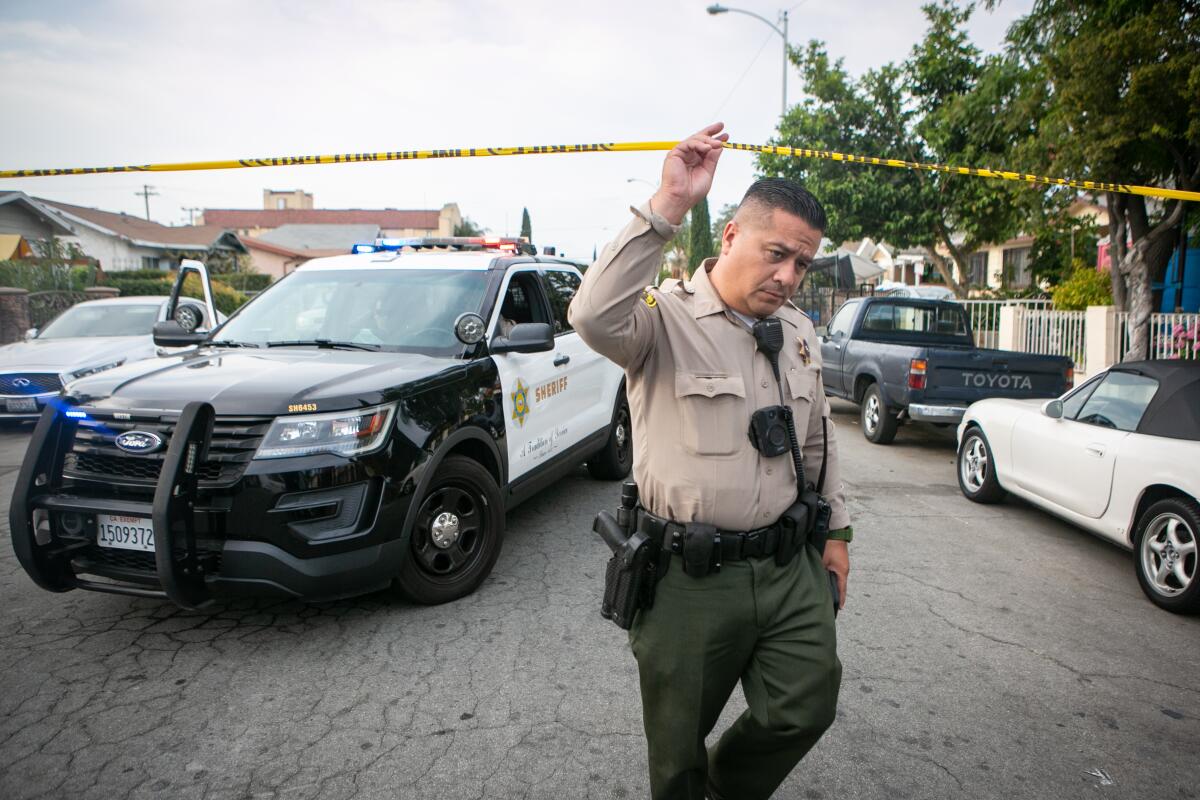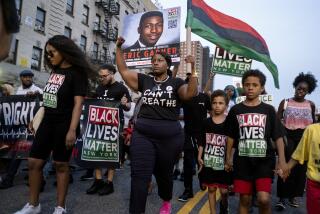Op-Ed: Homicide is on the rise again, but now we know how to stop it

Murder in the U.S. has become political once again, an issue for both the left and the right. But the U.S. can’t afford to bicker on this.
The nation is ranked in the global murder rate index worse than Pakistan, Sudan and Angola. Homicides in American cities rose an estimated 30% in 2020 and were up another 24% early this year. Los Angeles reported last week that shootings had spiked by half this year.
Fortunately, with decades of empirical data about what works and what doesn’t, we now know how to prevent murder. It turns out that both the liberals and the conservatives were on to something.
There are two broad ideological camps in this political quagmire: the law-and-order camp that supports more policing and tougher law enforcement and abhors gun control, and the criminal justice reform and Black Lives Matter camp that demands safety from police violence and racism and wants guns off the streets.
Republicans vilify Democrats as soft on crime. And Democrats face an internal rift between progressives who demand an end to violent and unfair policing, and those worried that such a focus would not help in the face of growing violent crime. In his response so far, President Biden has walked a fine line: emphasizing that states can use the $350 billion in COVID-19 relief funds to bolster local police departments, but also calling for better enforcement of gun control laws.
Research shows that police do have an important role to play in reducing homicides. Studies consistently find that there is less violent crime when the chances of being caught and punished are high. Unfortunately, as Jill Leovy’s book “Ghettoside” has shown, all too often the quality of homicide investigation is highly uneven and correlates with the victims’ race and neighborhood. It is unsurprising, then, that some people of color argue that their communities need more and better policing. In fact, a recent Gallup poll found that 81% of Black Americans want police to spend the same amount or even more time in their area.
However, more police should not mean a return to steep sentences and mass incarceration. There is no evidence that stronger punishment, whether the death penalty or long prison sentences, prevents murder. What works is smart enforcement that combines direct punishment threats to high-risk offenders with community support offering potential aggressors a real alternative to violence. That means providing immediate services to those willing to consider stepping away from violence, including offering cognitive behavioral treatment, bolstering social services, conducting direct outreach through mentoring, and opening employment opportunities and job skills trainings. The idea is to work with the community to tailor the approach directly to what drives each person to engage in crime. When Cincinnati adopted this approach, it saw a 38% decline in gang-related homicides, in just two years. Smart enforcement has reduced violent crime in most cities brave enough to adopt it.
Police reform is equally important. To prevent murder, we need to combat racism and police violence. When communities do not trust law enforcement, they will not cooperate with police and report crime. Moreover, there is clear evidence that unfair policing stimulates more crime. The reality is that whatever the future of policing looks like, police cannot be effective if they do not build trust with the community they are supposed to protect and serve. So when we invest in law enforcement, one priority must be to eradicate the racism and violence that have plagued so many departments. No one should be against this idea, as it not only saves more of us from becoming victims of police misconduct but also is vital for controlling the spiraling murder rate.
Preventing homicide is a long game. It can’t be won with law enforcement reform alone. Murder thrives in poverty and the lack of education opportunities. Research analyzing data from 63 countries found a clear link between conditions of poverty and homicide, even when controlling for overall development, inequality, and population size and density. Just consider this fact: One year extra in school reduces murder and assault by 30%. The lesson is simple: True prevention starts with investing in poverty reduction and better education for all.
Preventing murder also requires a serious discussion about guns. As one study summarizes it: “More Guns, More Crime.” Pro-gun politicians seem to have known this all along, why else would they have blocked federal funding for research about the relationship between firearms and homicide for 25 years?
Enough already. End the murder politics. Dueling soundbites will lead to a rerun of the 1990s, when Democrats postured to look tough on crime to win elections. We know how that story ended: Then-Sen. Biden wrote a crime bill that ballooned the American prison population without reducing crime.
This time we know better, and we should do better. If we burst out of the ideological bubbles, the U.S. can build an evidence-based strategy to end the killing.
Benjamin van Rooij, a law professor at the University of Amsterdam and UC Irvine, and Adam Fine, an assistant professor of criminology and criminal justice at Arizona State University, are the authors of the forthcoming book “The Behavioral Code: The Hidden Ways the Law Makes Us Better or Worse.”
More to Read
A cure for the common opinion
Get thought-provoking perspectives with our weekly newsletter.
You may occasionally receive promotional content from the Los Angeles Times.






